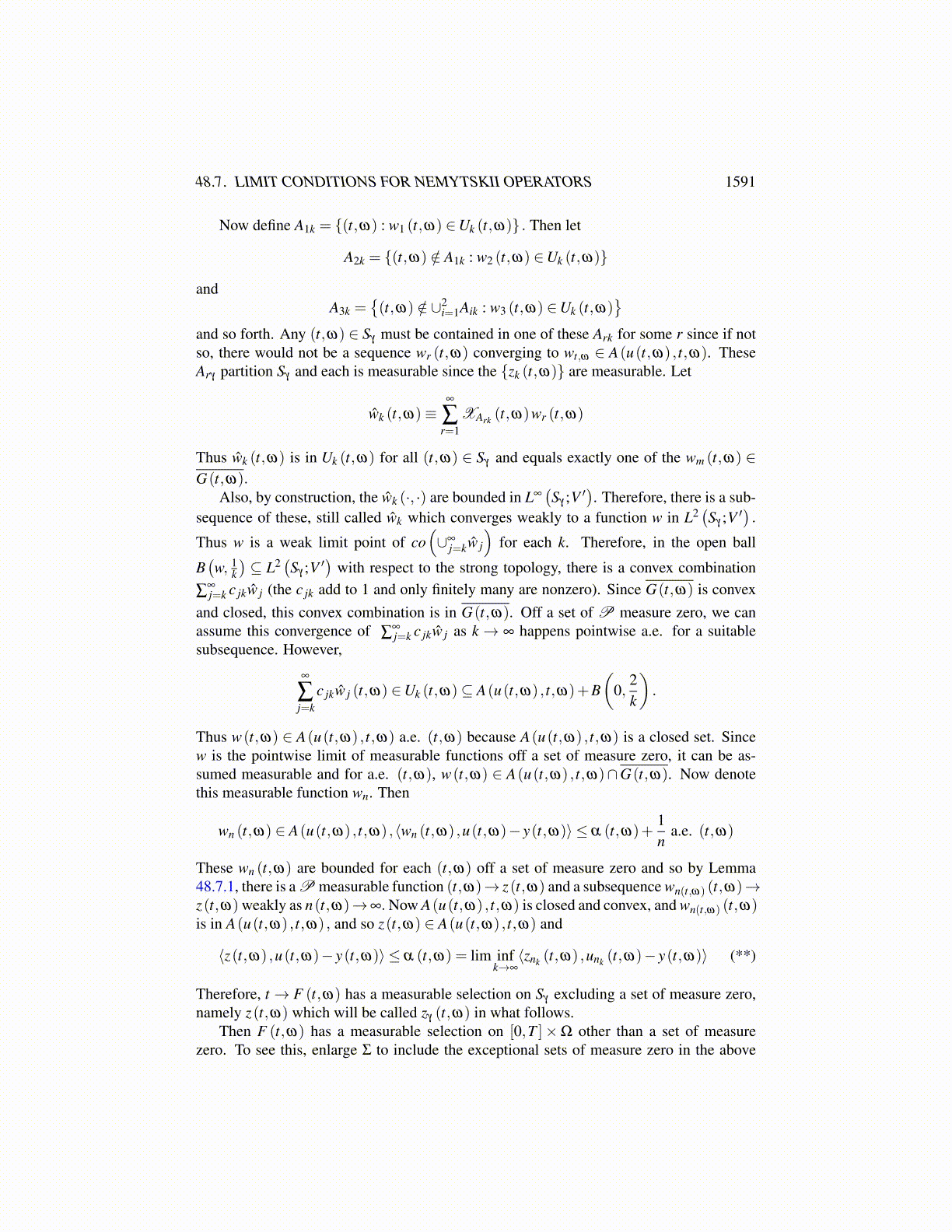
48.7. LIMIT CONDITIONS FOR NEMYTSKII OPERATORS 1591
The estimate 48.7.40 implies,
0≤ ⟨zn (t,ω) ,un (t,ω)−u(t,ω)⟩− ≤ c(t,ω)+C ||u(t,ω)||pV , (48.7.44)
where c is a function in L1 (0,T ). Thanks to (48.7.39),
lim infn→∞⟨zn (t,ω) ,un (t,ω)−u(t,ω)⟩ ≥ 0, a.e.
and, therefore, the following pointwise limit exists,
limn→∞⟨zn (t,ω) ,un (t,ω)−u(t,ω)⟩− = 0, a.e.
and so we may apply the dominated convergence theorem using (48.7.44) and conclude
limn→∞
∫Ω
∫ T
0⟨zn (t,ω) ,un (t,ω)−u(t,ω)⟩−dtdP
=∫
Ω
∫ T
0limn→∞⟨zn (t,ω) ,un (t,ω)−u(t,ω)⟩−dtdP = 0
Now, it follows from (48.7.41) and the above equation, that
limn→∞
∫Ω
∫ T
0⟨zn (t,ω) ,un (t,ω)−u(t,ω)⟩+dtdP
= limn→∞
∫Ω
∫ T
0⟨zn (t,ω) ,un (t,ω)−u(t,ω)⟩
+⟨zn (t,ω) ,un (t,ω)−u(t,ω)⟩−dtdP
= limn→∞⟨zn,un−u⟩V ′,V = 0.
Therefore, both ∫Ω
∫ T
0⟨zn (t,ω) ,un (t,ω)−u(t,ω)⟩+dtdP
and ∫Ω
∫ T
0⟨zn (t,ω) ,un (t,ω)−u(t,ω)⟩−dtdP
converge to 0, thus,
limn→∞
∫Ω
∫ T
0|⟨zn (t,ω) ,un (t,ω)−u(t,ω)⟩|dtdP = 0 (48.7.45)
From the above, it follows that there exists a further subsequence {nk} not depending ont,ω such that ∣∣⟨znk (t,ω) ,unk (t,ω)−u(t,ω)⟩
∣∣→ 0 a.e. (t,ω) . (48.7.46)
Therefore, by the pseudomonotone limit condition for A there exists
wt,ω ∈ A(u(t,ω) , t,ω)